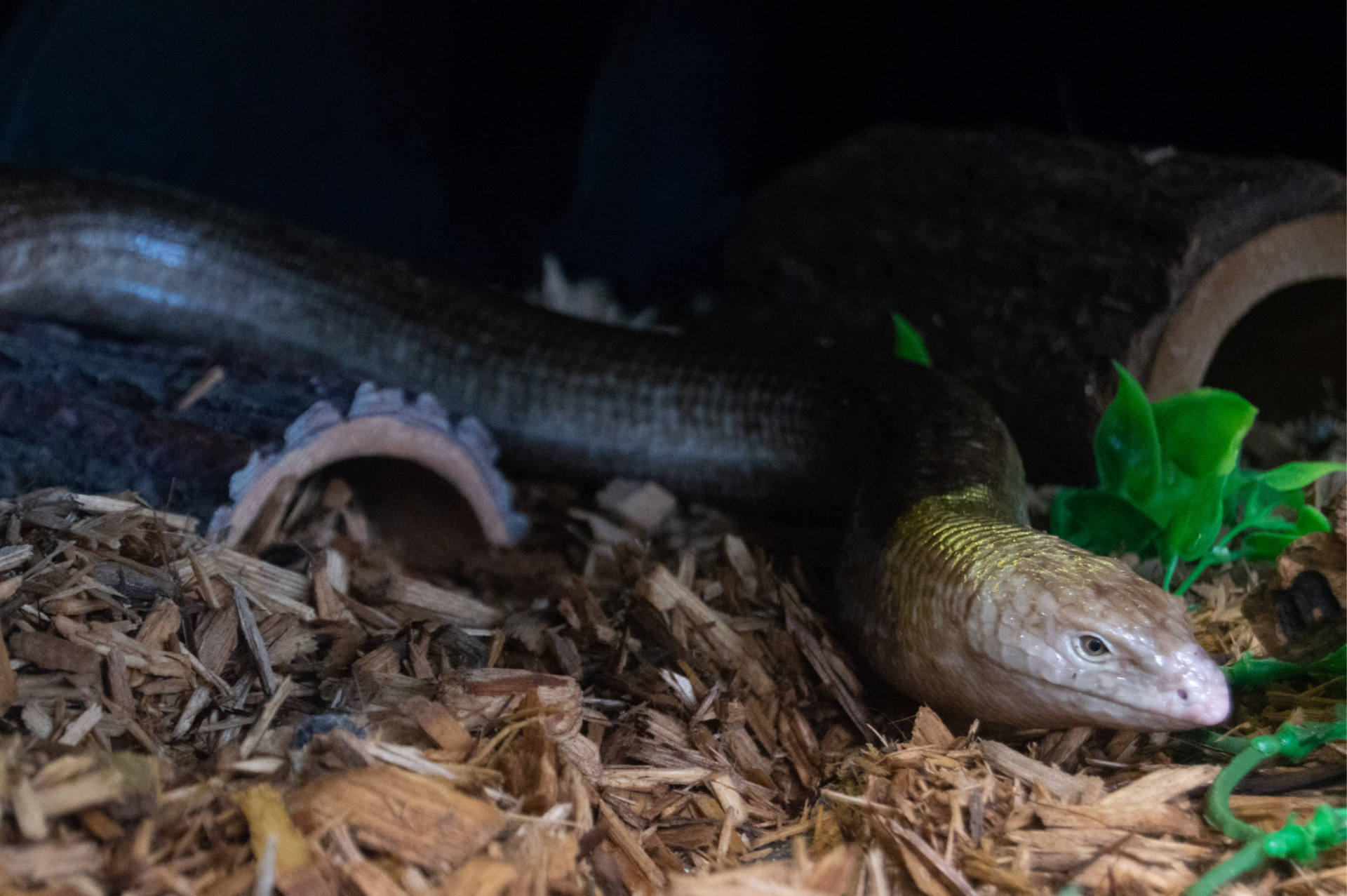European Glass Lizard

Basic Information:
Scientific Name: Ophisaurus
Habitat: Glass lizards can be found in the grasslands and wooded hills of Southeastern Europe, Southwestern Asia, predominantly in Russia.
Diet: Glass lizards are carnivorous and eat snails, mice, worms, bird eggs, and baby birds.
Size: 1.5 to 3.6 feet long
Weight: 0.7 to 1.3 pounds
Lifespan: 10 years in the wild. Up to 30 years in human care.
Distribution Map:
I.U.C.N. Conservation Status:

What does this mean?
Least Concern – a species determined by the International Union for Conservation of Nature (I.U.C.N.) to be pervasive, abundant, and thriving.
Our European Glass Lizards:
Plexi (Male) – Estimated Date of Birth Between 1994 & 2004
Glimmer – Estimated Date of Birth Between 2009 & 2011
About European Glass Lizards:
While on first appearance, a European Glass Lizards look like snakes, they are actually lizards. Why? They have ear holes on their head, non-flexible jaws, and moveable eyelids which are all characteristics of lizards and not snakes. Additionally, a glass lizard is 2/3s tail while a snake’s tail is quite a lot smaller. Additionally, this large tail can be dropped by a glass lizard when threatened. And like a lot of other lizards, this tail will be regenerated slowly later on. Glass lizards are also rather shy and don’t typically bite which is one reason why they are used instead of snakes in movies. Most famously, they were used in Indiana Jones and the Raiders of the Lost Ark‘s “Well of Souls” scene.
Did You Know?!
- Despite their appearance, glass lizards differ from snakes in that they have moveable eyelids, external ear openings, and inflexible jaws.
- Glass lizards are a burrowing species, which their lack of limbs helps with.
- Interestingly, 50% of European glass lizards will lay eggs while the other half will give birth to live babies.
- European glass lizards are capable of dropping their tail, but less likely to than other species because of the length of their tails.
- Glass lizards are most active after rainfall due to the abundance of worms and other snacks.
- Glass lizards can swim!
- Glass lizards are not threatened, but deforestation could prove a threat to their population.
